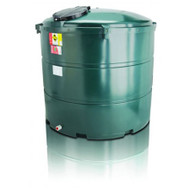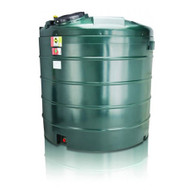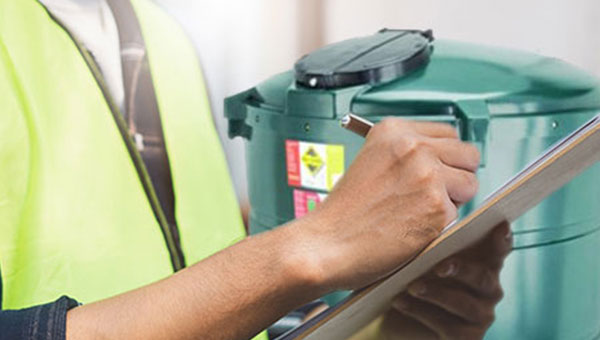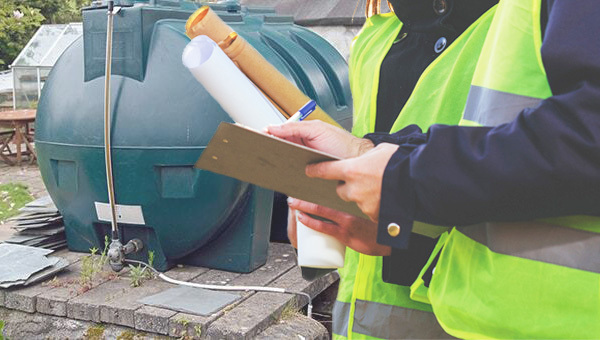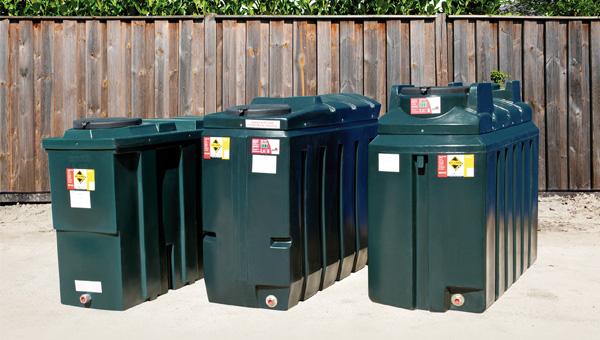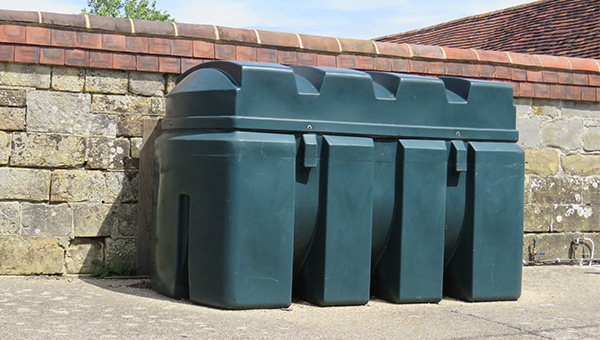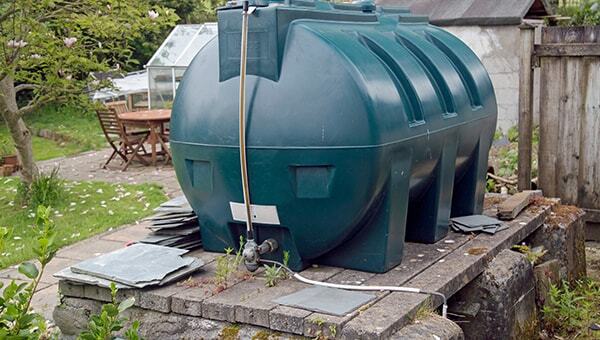
Storing oil for agricultural purposes is regulated by a different set of rules than storing it for domestic or commercial use. The primary intention of all oil tank regulations are to protect the oil from the environment and the environment from the oil. Still, the ways this is achieved do differ depending on the intended use for the oil being stored.
In this article, we will take a closer look at the regulations for storing oil on agricultural premises. If you would like to know more about the rules and regulations surrounding oil storage for your home or business needs, check out our other articles Domestic Oil Storage Tank Regulations and Commercial Oil Storage Tank Regulations, respectively.
We should also stress that the regulations being focused on here will primarily apply to agricultural oil storage in England. Advice across all areas of the UK is broadly similar, but some crucial aspects do differ. If you are installing or managing an oil storage tank on agricultural premises in Wales,Scotland or Northern Ireland, please ensure that you read up on the relevant regulations for your area and follow them over any conflicting advice given in this article. The links above are a good place to start for more information about each country’s oil storage regulations.
Disclaimer: The information in this article is provided for general guidance only. We strongly recommend contacting a local OFTEC registered technician or one registered with the Building Regulations Competent Person Scheme for further advice on installing and maintaining oil storage tanks.
Oil Storage Tank Regulations
Three different regulations in England regulate oil storage.
- Domestic Oil Storage covered by Building Regulations.
- Commercial Oil Storage covered by the Control of Pollution (Oil Storage) (England) Regulations 2001.
- Agricultural Oil Storage covered by the Control of Pollution (Silage, Slurry and Agricultural Fuel Oil), 1991.
Oil tanks that store heating oil for private dwellings with a capacity of 3500 litres or less fall under the domestic regulations. However, figuring out whether your tank falls under commercial or agricultural regulations can be a bit more complicated. We’ve already discussed the commercial rules at some length in the article mentioned above, so let's now look at the agricultural regulations to see when they become relevant.
Note: The following information is for above ground oil storage containers only. If you have, or are interested in, an underground oil storage tank, they are covered by the Defra Groundwater Protection Code instead.
Agricultural oil storage regulations
If you are storing over 1,500 litres of fuel oil on your farm for agricultural purposes (either in a new storage facility or if you’ve made substantial changes to an existing one), then you must follow the agricultural oil storage regulations. On the face of it, this seems relatively straightforward. However, the potential confusion arises around what is classed as “fuel oil”.
According to the Water Resources (Control of Pollution) (Silage, Slurry and Agricultural Fuel Oil) (England) Regulations (SSAFO), fuel oil is classed as:
“oil intended for use as a fuel for the production of heat or power but does not include oil intended for use exclusively as a fuel for heating a farmhouse or other residential premises on a farm and stored separately from other oil.”
If you read this and initially find the “use as a fuel for the production of heat” and “does not include oil intended for use exclusively as a fuel for heating a farmhouse” to be a bit of a contradiction, don’t worry, you aren’t alone. Fortunately, the meaning behind this statement can be more easily explained as follows:
- If you are storing the oil to provide heat and power on your working farm (e.g. to fuel your tractor or run a grain dryer), then it will fall under the agricultural regulations to be discussed in this article.
- If you are storing oil to provide heat for your farmhouse (i.e. your domestic residence), then that oil storage will fall under the domestic regulations - details of which can be found in the related article linked above.
- If you are storing oil for use in a separate, non-agricultural part of your business (e.g. to fuel lorries, trucks or any vehicles you hire out), that oil will be covered by the commercial regulations - details of which can, again, be found in the related article linked above.
This could potentially mean that you have three oil tanks on your property that all fall under different regulations, which may seem like a headache to manage. However, if you have your storage needs planned and installed by a professional, all the hard work can be done for you. All you are then left worrying about is ensuring that the tanks are well maintained, protected from theft and damage, and any leaks are stopped, reported, and cleaned up as soon as possible.
That being said, we still recommend that you keep on reading to familiarise yourself with the regulations. Whether you are a farmer, land manager or tenant farmer, you will be held responsible for any oil stored on the property that you own/manage. Failure to abide by the relevant regulations and avoid causing pollution can result in prosecution and a fine of up to £5,000 in a magistrates’ court or an unlimited fine in the Crown Court. Don’t take the risk. Know the regulations and make sure that you are storing and using oil safely and legally on your property.
Control of Pollution (Silage, Slurry and Agricultural Fuel Oil), 1991
Trawling through official documentation regarding governmental rules and regulations can be a chore. Fortunately, we’ve done most of the leg work for you. In the sections below, you will find a copy of the official requirements (taken from the legislation.gov website), which you can review if you want the plain facts, followed by our take on the most important points explained in layman's terms.
Requirements for storage of oil on farms (Official)
5.-(1) Subject to paragraph (2), a person who has custody or control of fuel oil on a farm must ensure that it is stored—
(a) in a fuel storage tank within a storage area or facility that satisfies the requirements of Schedule 3;
(b) in drums within such a storage area; or
(c) in an underground fuel storage tank.
(2) Paragraph (1) does not apply—
(a) to the temporary storage of fuel oil in a tanker used for transporting fuel oil on roads or about a farm; or
(b) where the total quantity of fuel oil stored on the farm does not exceed 1,500 litres.
Exemptions
6.—(1) Subject to paragraph (2), these Regulations do not apply to a silo, slurry storage system or fuel storage tank—
(a) which, before 1st March 1991, was being used for the purpose of making silage, storing slurry or, as the case may be, storing fuel oil;
(b) where it was not used before 1st March 1991 for that purpose, it was constructed before that date for such use; or
(c) in relation to which—
i. a contract for its construction, substantial enlargement or substantial reconstruction was entered into before 1st March 1991, or
ii. such work was commenced before that date, andand in either case the work was completed before 1st September 1991.
(2) These Regulations apply to a silo, slurry storage system or fuel storage tank meeting the requirements of paragraph (1) if any requirement of a notice under regulation 7 is not complied with within the period stated in the notice.
(3) Any reference in paragraph (2) to the period stated in a notice is to that period as extended if it has been extended under regulation 7(5)(b) or by virtue of regulation 8(6) and any reference in those paragraphs to a requirement of a notice is to that requirement as modified if it has been modified under regulation 7(5).
SCHEDULE 3
REQUIREMENTS FOR FUEL OIL STORAGE AREAS
1. The requirements to be satisfied in relation to a fuel oil storage area are as follows.
2. The storage area must be surrounded by a bund capable of retaining within the area—
(a) if there is only one fuel storage tank within the area and fuel oil is not otherwise stored there, a volume of fuel oil not less than 110 per cent of the capacity of the tank;
(b) if there is more than one fuel storage tank within the area and fuel oil is not otherwise stored there, a volume of fuel oil not less than the greater of—
i. 110 per cent of the capacity of the largest tank within the area; or
ii. 25 per cent of the total volume of such oil which could be stored in the tanks within the area;
(c) if there is no fuel storage tank within the area, a volume of fuel oil not less than 25 per cent of the total of such oil at any time stored within the area;
(d) in any other case, a volume of fuel oil not less than the greater of—
i. 110 per cent of the capacity of the fuel storage tank or, as the case may be, of the largest tank within the area;
ii. if there is more than one fuel storage tank within the area, 25 per cent of the total volume of such oil that could be stored in the tanks within the area; or
iii. 25 per cent of the total volume of such oil at any time stored within the area.
3. The bund and the base of the area must be—
(a) impermeable to water and oil; and
(b) designed and constructed so that they are of sufficient strength and structural integrity so that with proper maintenance they are likely to remain so for at least 20 years.
4. Every part of any fuel storage tank must be within the bund.
5. Any tap or valve permanently fixed to the fuel storage tank through which fuel oil can be discharged to the open must—
(a) also be within the bund;
(b) be so arranged as to discharge vertically downwards; and
(c) be shut and locked in that position when not in use.
6. If fuel from the tank is delivered through a flexible pipe that is permanently attached to the tank, the pipe must be—
(a) fitted with a tap or valve at its end that closes automatically when not in use; and
(b) locked in a way that ensures that it is kept within the bund when not in use.
7. No part of the fuel storage area or the bund enclosing it may be situated within 10 metres of any inland freshwaters or coastal waters that fuel oil could enter if it were to escape.
Requirements for storage of oil on farms (Explained)
The regulations shown above can be distilled down into three questions:
- Where can you store your oil?
- How can you store your oil?
- Are there any exemptions?
Using our understanding of the regulations, we will now attempt to answer them in a more easily digestible fashion.
Where can you store oil on a farm?
If the oil is for agricultural use, it can be stored in multiple locations around your farm, as long as it is stored in a suitable oil storage container.
The only real restriction you have to consider, however, is one that serves to limit the risk of environmental damage in the event of an oil leak. Any oil storage container you have on your farm MUST be located at least 10m from inland or coastal water access. This means that your stored oil can’t be near any yard drains, land drains, dry ditches etc., unless you have an exemption from the Environment Agency. In some cases (near a water supply intake, for example), you may actually need to have a larger safety zone around your storage location. Always seek advice from a professional, or the Environment Agency directly, if you are unsure where to place an oil storage container on agricultural property.
In what type of container can you store oil for agricultural use?
The regulations state that oil on a farm must be stored (above ground) in an oil tank or drum that meets ISO 9000 standards and has a life expectancy of at least 20 years with maintenance. Remember, if you intend to store oil below ground, you must follow the Defra Groundwater Protection Code rules instead.
The other important condition is that your chosen tank or drum must either be bunded or have some other (accepted) form of secondary containment to reduce the risk of leaks and spills causing harm to the environment.
Oil storage secondary containment on a farm
Under the agricultural regulations for oil storage, a bund must have the following characteristics:
- Meet the required capacity for the intended storage type (see below).
- Be impermeable to oil and water (base and walls).
- Have no drain-down pipe.
- Contain every part of the tank or drum, with valves and taps locked shut and directed down when not in use.
- Contain delivery pipes fitted with self-closing taps or valves if permanently attached to the tank.
- Have a life expectancy of at least 20 years with maintenance.
The bund itself can be either integral to the tank's design (an outer shell manufactured as part of the tank system), or it can be a structure made out of masonry or concrete. Either way, you must ensure it meets these regulations.
Disclaimer: a bund built from masonry or concrete will probably need a rendering or special coating on the internal surfaces to make the base and walls impermeable. If you buy an oil tank, be aware that "double-skinned" and "twin-walled" tanks are not necessarily bunded. An outer skin can only be classed as a bund if there is enough space between it and the inner tank to hold 110% of the inner tank's storage capacity.
| Secondary containment bund capacity for oil storage on a farm | ||
|---|---|---|
| Storage Type | Minimum Bund Capacity | |
| Single Fixed Tank | 110% of the tank's capacity | |
| Multiple Fixed Tanks | 25% of the combined total of all tanks or 110% of the largest tank, whichever one is greater. | |
| Oil Drum | 25% of the total volume | |
Are older oil storage installations exempt from the agricultural regulations?
If you have an oil storage container on your farm that was built before March 1991 (or had a contract for construction that was entered into and then completed before September 1991), it would technically be exempt from these rules. However, that does not mean you are exempt from the responsibility of protecting the environment from your stored oil. The Environment Agency can serve you notice at any time, forcing you to bring your storage up to code with the current regulations, if it thinks there is a significant risk of pollution.
Another thing to be aware of, if your oil storage container was built before March 1991, is that you will only remain exempt from the new rules if you don’t make any substantial changes to it. The moment you make any structural changes, increase its capacity, or relocate it to a new area, it is no longer exempt from the new rules, and you must inform the Environment Agency about it.
What to do when installing a new oil storage tank or drum on a farm
Properly planning out your installation is vital for any new oil storage container. It is up to you to decide what you need and where to locate it, but there are a few things you Must do:
- Check with your local authority if you need planning permission.
- Ensure your proposed installation will not pollute the surrounding environment.
- Inform the Environment Agency at least 14 days before beginning your installation.
- Carry out regular maintenance after installing it to keep the risk of pollution low.
Given that the Environment Agency may not approve your installation if it doesn’t meet their standards, it is well worth contacting them at the earliest opportunity. They will want to see things like a site plan, specifications for the container and a copy of the manufacturer’s guarantee.
Plan ahead, get the necessary approvals, abide by the regulations and protect the environment. Do these things, and you should be able to store oil on your farm without any issues.
We hope this has been an informative article, but do check out our “Basic Guide to Oil Storage Tanks” and “What Type of Tank Do You Need?” articles for further information. If you are in the market for high-quality polyethylene oil tanks, we stock a great range of bunded tanks over in our Oil Storage Tanks section that we'd recommend taking a look at.
If you have any further questions about oil tank regulations, or need any further advice about oil storage options, contact JDP today. Our team of experts are always on hand to help with all of your civils and drainage needs.


